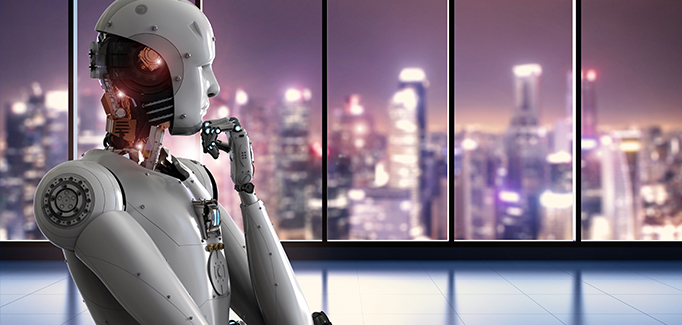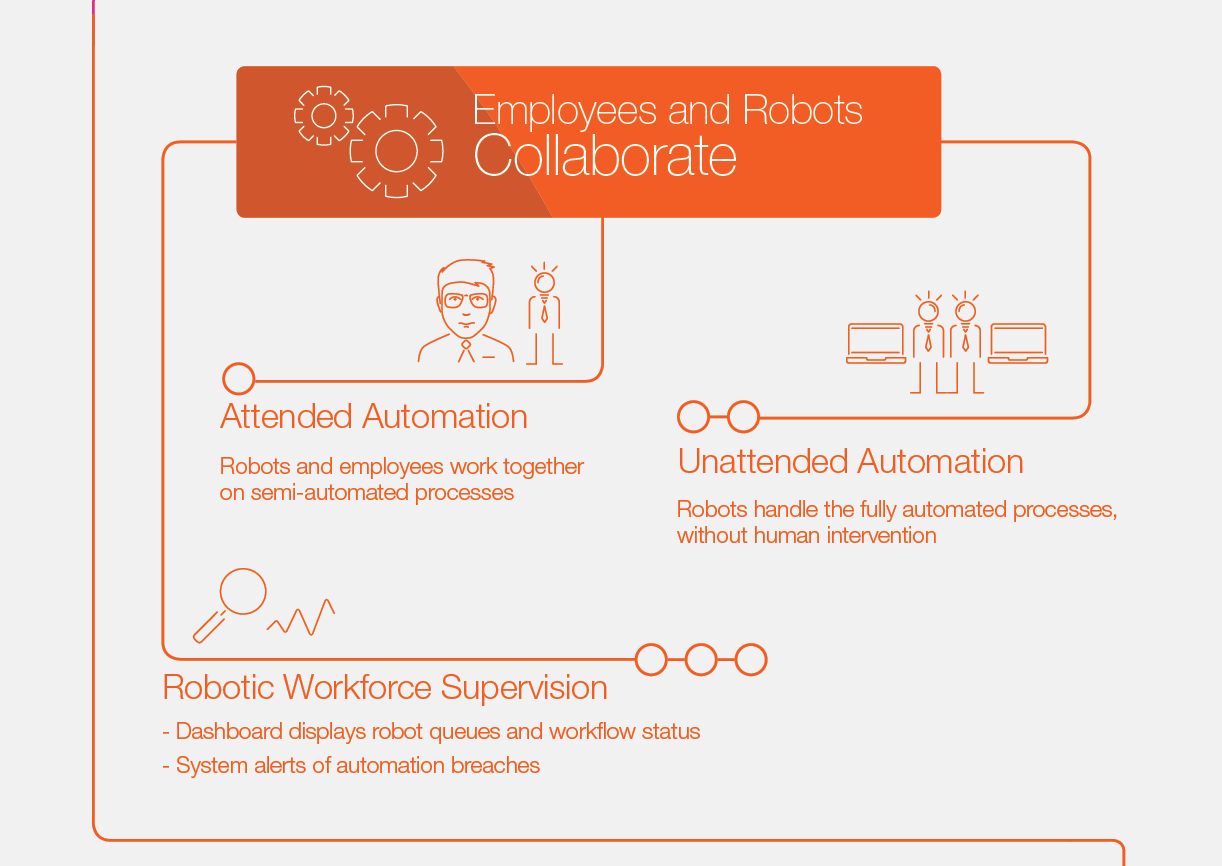How does RPA work?
Robotic process automation (RPA) is the use of computer software ‘robots’ to handle repetitive, rule-based digital tasks such as filling in the same information in multiple places, reentering data, or copying and pasting. It enables organizations to give more and more of the mundane admin work over to machines that can handle it well and in full compliance.
This enables an organization to achieve cost efficiencies by streamlining processes and enhancing accuracy. As importantly, it enables humans to focus on work that requires judgement, creativity and interpersonal skills rather than on routine processes. You can read our previous blog post for more info on what RPA is; this time, we delve into how RPA works.

How does RPA work with your existing systems?
RPA works by accessing information from your existing IT systems. There are numerous ways that RPA tools can integrate with your applications. One option is through connections to databases and enterprise web services in the backend. Another is through front end or desktop connections that take multiple forms.
Which way is best? It depends on your enterprise and the needs that the solution will address. With backend connectivity, your automation accesses systems and services under the control of a process automation server. This is most commonly used for unattended automation, where your software robots carry out back-office tasks such as processing insurance claims at scale and with minimal to no employee intervention.

Front-end RPA integrations
On the front end, there are several ways your automation can connect with desktop applications (such as SAP, PeopleSoft, and Salesforce CRM as examples) and other resources to get the job done. A front-end automation can read and write data as well as capture events straight from the user interface of the target application, in a similar way to a human operator.
Humans look at the screen, recognize the elements by what they look like and how they’re labeled and interact accordingly. But how does attended RPA work? By recognizing each element by its properties and technology family, and checking out its structure and hierarchy. Exactly where that element sits on the screen doesn’t really matter.
Another way of connecting to desktop elements is via controlled user interface connectivity. Its power can be enabled by hidden fields and controls created by the application owner, carrying information that’s not visible to the human eye. Such information might be an account number, for example.
Other tools in your process automation solution may provide additional capabilities. Some NICE automation tools, for example, include surface connectivity capabilities. What that means is the ability to pull in information from images, PDFs, and remote applications.
How to divide and conquer RPA tasks
One key consideration with RPA is how to divide and conquer the task. A layered approach to automation development is often the answer for complex situations, while process recording can be used to good effect for simpler and more routine business processes.
How do these RPA approaches work?
With the layered approach, different parts of a process automation are divided into different layers, each responsible for certain functionalities. Certain aspects require the work of process architects, while other aspects can be handed off to configurers. This approach to automation design eases development and also can make the automation easier to understand. [USE FIGURE 4-2: Building workflows in the Process Automation Design tool.]
At the top is your process layer, and below that are subprocesses that can be nested into main processes. One layer down are objects, or procedures for specific tasks, which can be built from yet another layer of components or screen interactions. The further down you go, the more the logic can be reused from one system to another and from one process to another.
Pros and cons of process recording
The concept of process recording is in some ways similar to setting up a macro to handle a set of steps on Microsoft Excel. Process recording follows the steps that a user performs and translates them into a workflow designed to replicate those actions. It can make the development of process automation fast and easy.
As the recorder monitors the user at work, it can’t tell whether the user has paused for a specific reason. It also won’t put the spotlight on exceptions that will break down the process. Neither can it capture automations with different path options (such as approving or rejecting a claim based on customer details and requirements). Nor will it understand the business reasons why the automation took a specific path and not another.
As such, process recording will need various modifications to ensure that the final product is efficient and accurate. Also, process recording isn’t as configurable as the layered design process and doesn’t lend itself to best practices of reusing modules and subprocesses.
Design-based automation creation is not as simple as turning on a recorder. It’s more detailed, requires more planning, and may involve more people collaborating. But it does provide a solid foundation for enterprise-grade automations. With developer tools that feature drag-and-drop functionality, business users who aren’t coders are often surprised by what they can achieve.

AI-powered RPA – how it works
This is a term for advanced automation that leverages artificial intelligence (AI) and related technologies such as Optical Character Recognition, Text Analytics, and Machine Learning.
Where attended and unattended RPA excel with processes that leverage information from structured databases, cognitive automation can also tap into unstructured data sources like scanned documents, emails and letters.
Cognitive automation uses Optical Character Recognition (or OCR) , chatbots and Machine Learning technologies, to support the automation of more complex business processes. With machine learning, the automation process has the ability to learn, expand capabilities, and continually improve certain aspects of its functionality on its own.
In the foreseeable future, you’ll be able to use AI to independently map, identify, and automate processes. AI is also able to train robots to handle exceptions, by learning from the ways that human employees handle exceptions in attended automation processes.
The NICE Virtual workforce
The NICE RPA platform comprises software robots with the capabilities to take over all the repetitive, admin driven processes facing the human workforce every day. A variety of tasks can be executed independently without human intervention, freeing employees to focus their attention on more valuable business priorities.
Powered by a data-driven intelligent decisioning engine, NICE Desktop Analytics helps identify the processes that are the best candidates for process automation and guidance. The NICE process automation solution includes a central ‘control room’ that monitors the livelihood of the system and allocates robotic resources based on your needs at any given time. It is fully scalable, providing real-time visibility and control.
Learn more about how RPA works and how it can enhance efficiency and improve employee engagement in your enterprise.